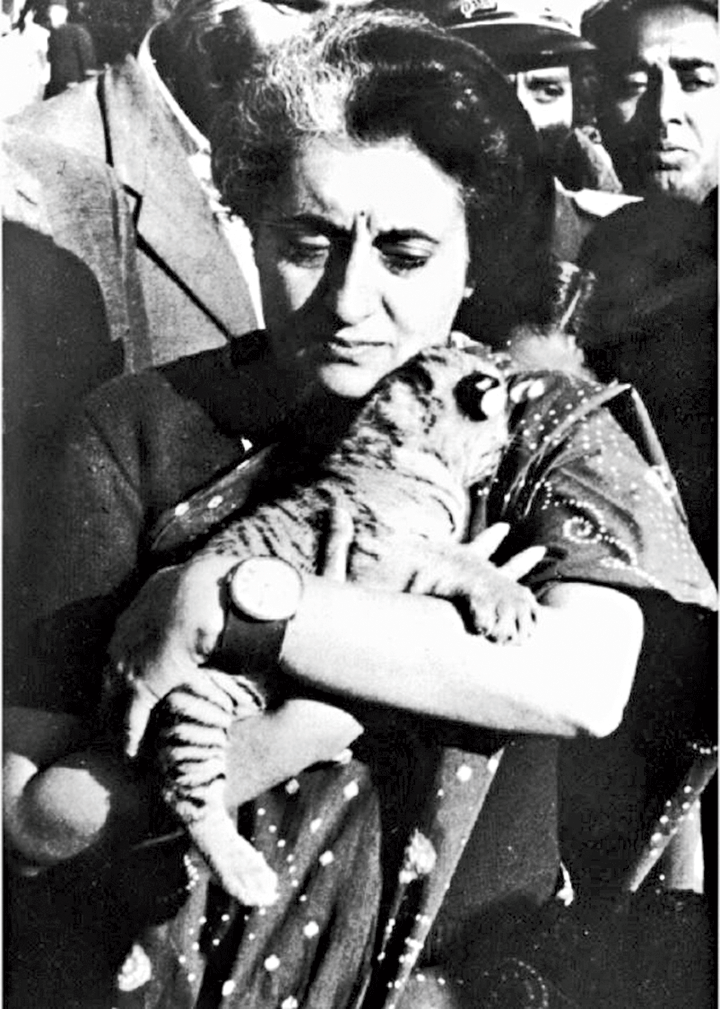We live in a world where the survival of the tiger in the wild is an affirmation of humanity’s compassion for fellow creatures. Much more than that, it is a symbol of making spaces for nature, its array of life forms, small and large, on the lands of the largest and most populous of continents: Asia. And nowhere do as many tigers share living spaces with as many people as South Asia, most so India.
Earlier this year, Prime Minister Narendra Modi personally released new tiger estimates. He hailed the work of scientists and foresters and quipped, “Bagho mein bahar hai”, Hindi for the tigers are celebrating. He may have been referring to the 1969 hit Hindi film, Aradhana, where the song was similar except it went, “Baagon mein bahar hai”, or flowers are blooming in the gardens.
But 1969 was critical for the animal that had long been the star of the hunt: the tiger. The Bengal tiger (Panthera tigris tigris) entered the Red Data Book. Maintained by the International Union for the Conservation of Nature and Natural Resources or IUCN, this document sought, and seeks, simply to draw attention to species that are under various degrees of threat of extinction.
This simply meant that like, say, the tigers of Java or Sumatra, the Bengal tiger was now an endangered species. If nothing was done, its numbers, like its habitat, would dwindle and it would vanish. In a decade, the tigers of Java would, indeed, be extinct.
This was not entirely unexpected. In a little-known conversation recorded in his diary, Lord Wavell, a big game hunter whose books were already known far and wide, had given vent to dark thoughts in January 1947. Jim Corbett felt tigers “would soon become extinct in many parts of India”. The reason — it echoed Kipling’s idea of the white man’s distrust of Indians — was simple enough. “Indian politicians are no sportsmen,” said Corbett, “and tigers have no votes, while the right to a gun license will go with a vote.”
As a matter of fact, tigers continued to be regarded as game animals with licenses being up for sale in Shooting Blocks till 1970. The pressure came not only from those defending crops or cultivators clearing forests for farmland. Much of the pressure was from former princes, officials of the civil and military services and shikar companies literally out to make a killing. The Fodor’s Guide for India even detailed the cost of a tiger shoot (complete with travel, boarding and all): 40,000 rupees at the end of the 1960s.
One such animal ended up in a drawing room in New Delhi in July 1956. This was just under a decade after Corbett had spoken to Wavell. Gifted by the ruler of Rewa in central India who had shot it, it evoked mixed emotions in the household where it lay.
“Every time I pass it I feel very sad that instead of lying here he might have been... roaring in the jungle. Our tigers are such beautiful creatures, so graceful. You can see their muscles rippling under their skins... It seems such a shame to deprive anything of the joy of living just for our pleasure.”
The place was the then prime minister’s residence or the Teen Murti Bhavan, the former residence of the Commanders in Chief of the British Indian Empire. The writer was Indira Gandhi whose father had received the skin as gift. Her letter to her son, Rajiv, then a student at Doon School, struck a note of hope. Many who went into jungles took with them cameras not guns.
The tide for the tiger took time to turn. Viewed through the sight of a rifle or as an adversary of the spread of agriculture, it indeed took huge reverses not just after 1947 but long before. The coming of long-distance rifles and four-wheel drives in the Second World War was followed by the arrival of modern petrochemical pesticides that helped push back malarial mosquitoes. This opened up lands in the Tarai grasslands of North India, Nepal and Bhutan, among its finest redoubts.
A major change in this context was that India in the late 1960s was in the throes of two successive droughts. Among other ideas, there was wider acceptance of the need to secure forest and green cover. A year into her premiership, speaking in Bangalore University in 1967, Indira Gandhi rued how hydel projects and mines had contributed to the whittling down of the forest cover.
The alarm bells would sound only by the late 1960s. New studies made a difference. George Schaller in Kanha, central India, showed how tigers and deer were part of a complex set of relations of prey and predator, of plants and animals that were part of a larger web of life. Such meticulous and painstaking observations of animal behaviour in the wild in such a perspective were still relatively new. His book, The Deer and Tiger, in 1968 would be a landmark.
The Bombay Natural History Society conducted a survey across the forest divisions of the country and came up with a sobering thought. Not only were tiger numbers in decline but in many regions famed for the species there were virtually none left.
But it was the attitude of the leadership that drew together these threads of science and citizen, nature lover and voluntary group, into a new mosaic. By 1969, when the Bengal tiger entered the Red Data Book, India’s then prime minister assured the delegates of the gathering of the IUCN in Delhi that natural heritage had lasting value in the eyes of the leadership. “We do need foreign exchange,” she said, “but not at the cost of the life and liberty of the most beautiful four footed and feathered inhabitants of our land.”
In four short years, not only would the tiger be protected but a nationwide network of reserves would be set up to secure its future. Fur trade exports were outlawed and in 1970 a moratorium declared on hunting and hunts.
Instead of being seen as a trophy or a potential rug on the floor, it would be a symbol of the enduring health of its forest home, a sign that the cycles of nature were in order. Was it just about the lady and the tiger? There is little doubt that Indira Gandhi’s being in office as the crisis of wildlife took on new and ominous shape made a huge difference.
Yet sensibilities do matter. It is more than the tiger whose future was — or is — at stake. After all, Corbett notwithstanding, it was the high noon of Empire that saw an orgy of big game shooting by the British military and civil elite and princes.
In April 1973, Project Tiger got under way. The launch was perhaps not far from where Corbett and Wavell had sat in a machan. It was on the banks of the river, Ramganga, and in a reserve named in 1955 after the man himself: Corbett National Park.
History is replete with twists and turns, but there is a time and place when a new idea acquires a dynamic all its own. The end of the Sixties was such a time. And the tiger found its defenders and champions in the nick of time.
The author is a professor of history and environmental studies at Ashoka University



